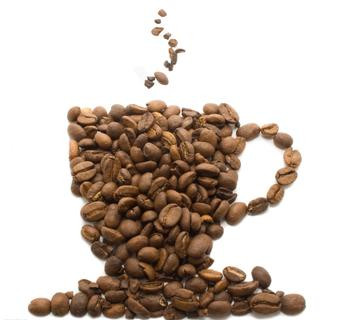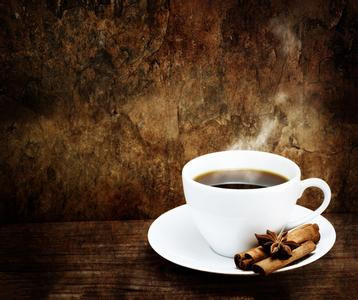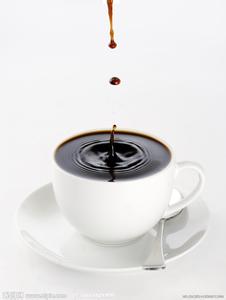General knowledge of coffee roasting the origin of roasting patterns

There are two main sources of naming: one is the general preference of national drinkers for baking patterns: wishful baking, French baking, etc. One is the naming convention developed by coffee professionals in the United States from the late 19th century to the early 20th century.
The origin of these two names is still somewhat ambiguous, so there is now a more objective way to assist in interpreting roasting patterns, which is to use an instrument to read the color of coffee powder in numerical form.
Regional Bake Mode Name
Let's start by quickly clicking through the names of these common baking patterns, which are based on regional drinkers 'preferences and can often be seen on purchased packaging.
The lightest roast is the New England roast, the goal of which is almost decided in the North American coffee market; the one that is still dominant in the United States is an approximately medium roast, which has no name in the past, but we will now call it American roast; the darker roast than American roast usually has a small amount of coffee fat on the surface of the coffee beans, which is called Vienna roast or light French roast; French roasts represent moderate deep roasts, with more coffee fat on the surface; Italian roasts, Spanish roasts, Continental roasts, or New Orleans roasts, with deeper coloring and more coffee fat; Deep baking is called deep French baking, which is common in the northwest of France and is very close to black and dark brown. It is also called Spanish baking, Turkish baking and Napoli baking. The most recent term is "espresso roast," which lies somewhere between Italian and French roast depths, and is most common in northern Italy. It has a medium dark brown appearance and is coated with a thin layer of coffee fat.
The author organizes these names into a summary as follows:
. New England baking: light brown, bean flour dry.
. American Roast: Medium brown, bean flour dry.
. Viennese: Medium dark brown with a few drops of coffee fat on the beans.
. French Roast: Moderately dark brown bean flour with a thin coffee fat.
Espresso Roast: Dark brown, depending on the degree of roasting, the beans may have only a thin layer of coffee fat or a thick layer of coffee fat.
. Italian Bake: Dark brown, close to black, the bean flour is shiny, most bakers bake to this extent is the darkest.
. Dark French or Spanish: A very dark brown that goes black quickly and is extremely oily.
Traditional US-defined baking pattern names
There is also a naming convention for baking patterns that has been used in the United States since the 19th century, roughly in the following order:
. Cinnamon: Very light brown.
. Light: The lightest degree of American baking.
. Medium baking.
. Medium High: American baking lasts the longest to this point.
. City high: A little deeper than the usual American roast.
. Full City Roast: Deeper than the former, the bean noodles sometimes have a few drops of coffee fat.
. Dark Roast: Dark brown, bean-flour glossy, similar to the regional classification of Espresso or French Roast.
. Heavy: Very dark brown, beancurd glossy, similar to Italian baking.
Among these names, the only one that is still frequently used today is the name Deep City Roast, a baking pattern that is located a little deeper than the American Roast of the mid-20th century.
Filling in the gaps in traditional baking pattern classification with numbers: caramelization degree classification and SCAA's color scale discrimination system
After looking at the previous two categories of baking pattern classification, are you confused? Yes, in order to solve the problem caused by these two, the Specialty Coffee Association of America (SCAA) specially developed a set of auxiliary tools, so that we can use more accurate instruments to determine the degree of roasting color.
There are eight references in this set of aids, no names, only numbers, which correspond exactly to eight carefully designed baking depth codes. A sample coffee bean is roasted, ground to a fine powder and poured into a special tray before it is sent to a measuring instrument loaded with chemical index or caramelization standards to begin comparison with color scales. The depth of these coffee beans is classified as the closest to one of the "Agtron". The color scale corresponds to caramelization numbers ranging from #95(lightest baking depth),#85(lightest baking depth), to #25(generally darkest baking depth).
Of course, having a "near-infrared spectrophotometer" that can accurately read the color of coffee powder on a special tray costs a high price of nearly $7,000 to $20,000.
However, the current SCAA developed caramelization degree discrimination method, its special words in fact and no communication between consumers, when consumers buy a packet of coffee beans, packaging bags do not see the so-called "caramelization" degree logo. Coffee books are almost silent on the subject. But the charts on pages 80 - 81 link caramelization to our usual baking patterns and depths. But it must be emphasized here that SCAA developed this caramelization degree system intended to be completely separate from traditional baking patterns and to serve as a basis for a more objective discussion of baking depth.
In the back cover of the manual attached to this system, there are four-color printed color charts for reference, but please note that these color charts are sometimes inaccurate due to different factors, such as printing misalignment and blurring, printing ink just enough, using color code when the light source error, chromatic aberration, and even what to eat for lunch will affect the accuracy of the color chart. So technically, all of these factors make the color chart useless. In other words, you don't need to compare the color chart to a handful of coffee beans because it's meaningless. This color chart is attached to the manual just to let you know that this tool exists, but we don't really have a chance to use it.
You can find information about this caramelization/color chart system in the Related Resources section, by the way, the main developer of this system is Carl Staub, the head of Agtron and a very innovative scientist.
Important Notice :
前街咖啡 FrontStreet Coffee has moved to new addredd:
FrontStreet Coffee Address: 315,Donghua East Road,GuangZhou
Tel:020 38364473
- Prev

Which baking mode is the best?
Because of the cultural and regional differences mentioned earlier, it is difficult to draw a conclusion on this topic. But for those who sell coffee beans, the best one is the one with the highest sales. Most bakers have their own long-term philosophy of baking and bean blending. They are very competent professionals in this field, but no one dares to say for sure.
- Next

Baking vocabulary related to "processor" for roasting coffee beans
The words mentioned in this section are all flavor words related to the post-harvest processing procedures (shelling, fermentation, washing, drying and storage), most of which are defective flavors. Clean: this common word means that the coffee bean comes directly from the fruit in the cup, without any defective flavor in the process. China and America
Related
- What is the meaning of lactic acid fermentation with coffee bean treatment?
- How to judge the state of foam by sound?
- How does the latte pull out the unicorn pattern? Come to get for a little trick to improve the flower pull!
- Will flower pulling affect the taste of the latte?
- Do you know the history of coffee?
- The difference between honey treatment and sun washing what is raisin honey treatment?
- What kind of milk can a novice use to make coffee foam to keep the foam longer? The correct method and skills of milking tutorial sharing
- Why do washed coffee beans taste sour? Flavor characteristics of washed Coffee
- Introduction to the skill of how to practice the size and height of water injection around the circle of hand-brewed coffee
- How do beginners practice coffee flower drawing from scratch?

